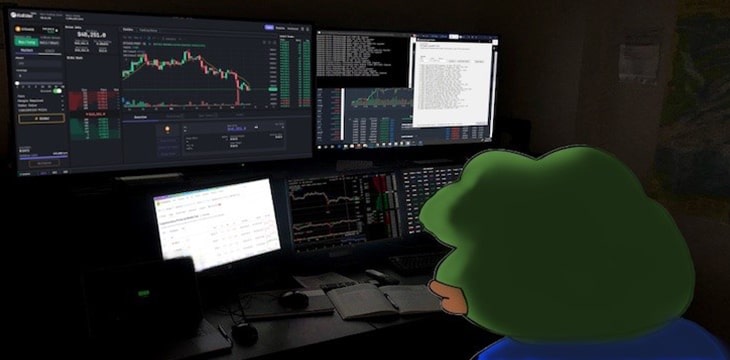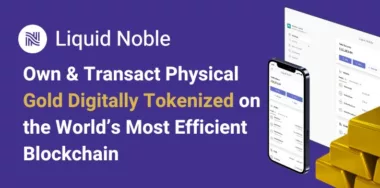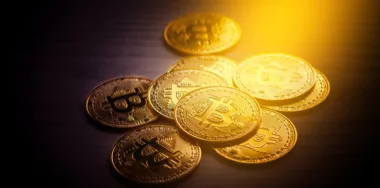It’s no secret that speculating and trading are the most popular use cases/applications for digital assets—and I don’t see that changing anytime soon.
Recently, I gave a guest lecture at Rosemont College to a group of about 50 students that studied international finance, intro to finance, and international business. My lecture revolved around opportunities in the banking, finance, and business world that leveraged blockchain for gains in efficiency.
Throughout the lecture, the students had a lot of great questions. But 70% of them revolved around trading digital assets and forecasting market movements—which wasn’t an issue. It just isn’t the area where blockchain and digital assets have their most significant impact unless we are talking about digitizing equities to improve settlement times.
However, their questions got me thinking about why trading is so popular compared to enterprise applications, why trading isn’t going anywhere anytime soon, and why it is likely to remain the top use-case/application for digital assets for quite some time.
Why trading isn’t going anywhere
One student commented, “Your presentation opened my eyes to the business opportunities that are possible by way of blockchain, but my belief and what I have seen so far, is a lot of blockchains and cryptocurrencies are just used for speculating.”
I agree with the latter half of that sentence. Trading and speculating account for the lion’s share of the activity taking place in the blockchain and digital asset world.
To answer the student’s question, I explained why this was the case. When groups of people are making significant amounts of money, it will attract even larger groups of people interested in making money, which will inevitably attract groups of people interested in taking advantage of all of these people to make money. In other words, a space flush with money and a continuous stream of relatively uneducated newcomers fixated on making some cash will attract scammers and illicit businesses that aim to separate people from their hard-earned money. This creates the perfect environment for a multitude of coins, tokens, and blockchains that exist, all vying to occupy a portion of the $980 billion digital asset industry.
But outside of the idea that throwing money at digital assets can make—or lose—an individual life-changing amounts of money, I think trading has an immense amount of gravity and staying power because it is something that everyone can participate in compared to enterprise applications in which fewer players participate. In order to put it another way, there are significantly more consumers than companies on this planet, and because consumers have more ways to participate in trading than they do in enterprise operations, more people are trading and speculating or building a project or product that relates to trading and speculating than there are people supporting or building an enterprise-grade blockchain application.
So how can we change that?
For the foreseeable future, I believe trading will remain the dominant “use-case” for digital assets. But once a B2C application or service comes along that truly makes a consumer’s life easier or more enjoyable, we will see that new use-case become a contender for “most popular blockchain application/use-case.” An application like this will most likely write data, send data, or verify data via the blockchain behind the scenes, but the end-user won’t be aware of that technological functionality the same way they are unaware of the programming language used to build their favorite websites.
But how do we get there? I think it loops back to reducing friction for consumers and closing the education gap in the blockchain/digital asset world. Another reason why I think trading remains dominant is that there isn’t much friction in the trading process; you exchange your fiat for digital assets, and then you are done. If you are lucky, they will increase in value, and you will sell them for a profit.
However, when it comes to the other apps and services that exist, most of them require you to exchange your fiat for a coin or token and then log into an app or service where you can spend the coin or token. Then you must ultimately decide that the app, service, or actions that take place on the platform are worth it to spend the coin or token on, while in the background, there will be people trying to convince you to HODL your coin or token and not spend it on the app or service because there is a chance the coin or token will increase in value.
As you can see, a lot less thinking goes into trading and speculating, the outcome of trading and speculating can have a more significant and direct impact on the end-users life. Fewer tradeoffs need to be accounted for compared to deciding whether you want to spend coins and tokens within an app or service. However, I think the solution to that problem is simple. By removing coins and tokens from the customer/client-facing portions of the app or service, it would essentially make the app or service identical to the apps and services most consumers are familiar with using. The end users won’t know they will be using blockchain, but there will be gains in efficiency on the backend and front-end thanks to blockchain. I believe all of this links back to the education gap because speaking with the college students showed me that people aren’t even aware that a blockchain can be used like this. If more people were aware that blockchain can be used in a business setting and that you can do much more with it than trade and speculate, then maybe the space would attract higher quality talent, and more people would attempt to build business-solutions rather than blockchain-based gimmicks with a short lifespan like NFTs.
But long story short, trading and speculating is the most popular blockchain use-case/application because money means something to everyone. Everyone speaks dollars and cents, and the idea of having more dollars and cents than you did yesterday appeals to practically everybody on the planet. Until that changes or until B2C applications begin having a bigger and more direct impact on people’s lives worldwide, trading will remain the dominant use-case for blockchain technologies.
Watch: The BSV Global Blockchain Convention panel, Re-Inventing Business with Blockchain
New to blockchain? Check out CoinGeek’s Blockchain for Beginners section, the ultimate resource guide to learn more about blockchain technology.









